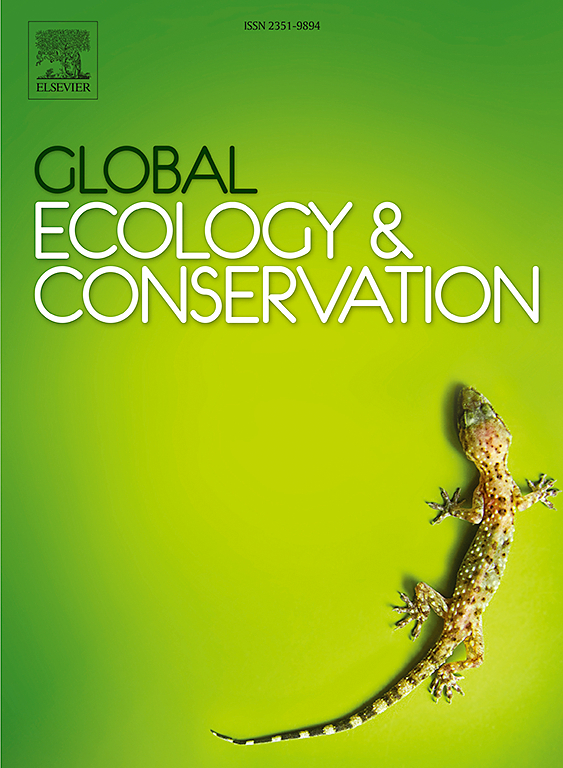Life after death: Hidden diversity of orchids across European cemeteries
IF 3.4
2区 环境科学与生态学
Q1 BIODIVERSITY CONSERVATION
引用次数: 0
Abstract
Habitats sensitive to anthropogenic pressures are growing in conservation importance in the protection and perpetuation of rare animal and plant species. Although natural habitats sensitive to disturbance in urban areas have mostly declined in availability, patches offer conservation opportunities for wildlife that are fundamental to maintaining biodiversity. Human burial sites can contribute to this: they are more numerous and greater in extent in more urbanized areas, but their significance in the maintenance and promotion of biodiversity has not been considered across Europe and other continents. Because of their high sensitivity to even minor disturbance to natural habitats, orchid diversity is a key bioindicator of terrestrial ecosystem function. We evaluated orchid diversity in cemeteries of 13 European countries. Comprehensive field surveys of orchid flora in 2079 locations revealed that they occurred in every country visited and in high variability in both the number of taxa (n = 65) and individual plant counts (n = 44680). We propose that cemeteries are of major importance as refugia in conserving orchids in most of the visited European countries; however, one of the most urgent issues is to identify the many anthropogenic factors determining biodiversity of cemeteries, and to eliminate some newly emerged management practices in cemeteries that undermine biodiversity, including the orchid flora. Human burial grounds are therefore not just important in preserving the history of humankind; they are key in protecting biodiversity in this modern era of unprecedented anthropogenic changes to our terrestrial environments, especially as a result of rapid and unrelenting urbanization.
死后的生命:欧洲墓地中隐藏的兰花多样性
对人为压力敏感的生境在保护和延续稀有动植物物种方面的重要性日益增加。尽管城市地区易受干扰的自然栖息地的可用性大多下降,但斑块为野生动物提供了保护机会,这对维持生物多样性至关重要。人类墓葬地可以对此作出贡献:它们在城市化程度较高的地区数量更多,范围更广,但它们在维护和促进生物多样性方面的意义尚未在欧洲和其他大陆得到考虑。兰花多样性对自然生境的微小干扰具有高度敏感性,是陆地生态系统功能的重要生物指标。我们对13个欧洲国家的墓地进行了兰花多样性评估。对2079个地点的兰花区系进行的综合野外调查表明,它们在每个被访问的国家都存在,并且在分类群数量(n = 65)和单株数量(n = 44680)方面具有很高的变异性。我们认为,在大多数被访问的欧洲国家,墓地是兰花保护的重要避难所;然而,目前最紧迫的问题之一是确定影响墓地生物多样性的人为因素,并消除一些破坏墓地生物多样性的新管理做法,包括兰花植物群。因此,人类墓地不仅对保存人类历史具有重要意义;在这个陆地环境发生前所未有的人为变化的现代时代,特别是由于快速和无情的城市化,它们是保护生物多样性的关键。
本文章由计算机程序翻译,如有差异,请以英文原文为准。
求助全文
约1分钟内获得全文
求助全文
来源期刊

Global Ecology and Conservation
Agricultural and Biological Sciences-Ecology, Evolution, Behavior and Systematics
CiteScore
8.10
自引率
5.00%
发文量
346
审稿时长
83 days
期刊介绍:
Global Ecology and Conservation is a peer-reviewed, open-access journal covering all sub-disciplines of ecological and conservation science: from theory to practice, from molecules to ecosystems, from regional to global. The fields covered include: organismal, population, community, and ecosystem ecology; physiological, evolutionary, and behavioral ecology; and conservation science.
 求助内容:
求助内容: 应助结果提醒方式:
应助结果提醒方式:


